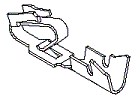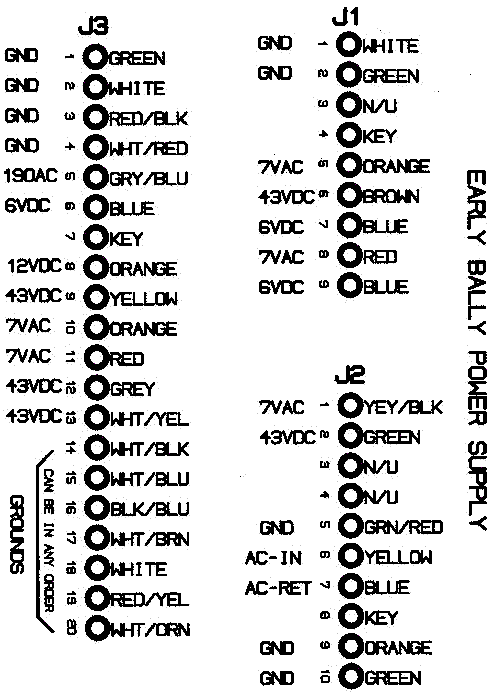BULLETPROOFING EARLY BALLY RECTIFIER BOARDS
====================================================
These -18 boards were used until about 1980 and are always trashed and hacked.
The rectifiers used by bally were grossly undersized amperage wise, and replacing a single unit required precision soldering skills. If you did not get the new rectifier lined up with the other two units, it would prevent them from making solid contact with the heat sink - burning them all out even faster. (the board in the picture had a rectifier replaced and the tech put it on top of the board, rather than try to align it with the other rectifiers on the bottom of the board).
The connector pins would oxidize and finally melt the solder off the circuit board as the resistance increased. The connector would often get so hot it would burn itself in half, and the desperate tech would solder the pin's wire directly to the test point!
The diodes were undersized, the fuse clips will be burnt and no longer tightly tempered.
A big mess.
So big of a mess, that many people just choose to replace the entire board with a brand new design.
At $55 for a brand new Rottendog BPS018, replacement is not a bad option. If you choose to replace your board, remember to move one transformer wire at a time! Don't just clip all the wires and then drive yourself crazy finding their proper location on the new board. I warned you.
 1.jpg
1.jpg


 Captain Cook, HI
Captain Cook, HI
 Sana'a
Sana'a



